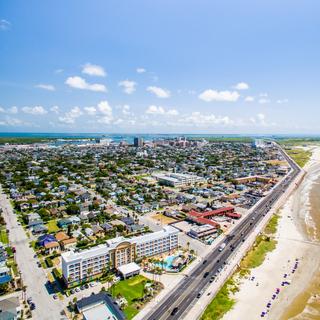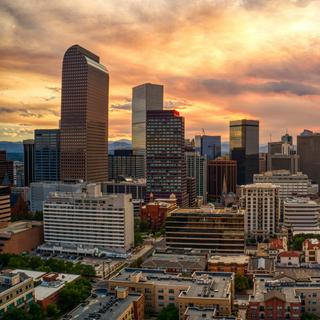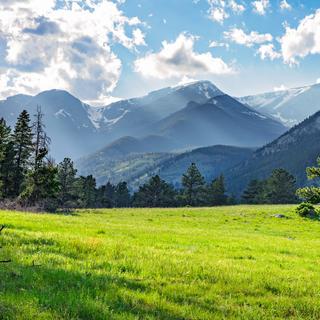Tulsa, OK weather and climate in 2025
Day
10 °C
Night
-2 °C
Sea
0 °C
Precipitation
61 mm
in month
Rainy days
6 days
in month
Daylight
10 hours
average
Sunshine
5 hours
average
Humidity
69 %
Weather charts for Tulsa, OK
Find more destinations like this
Closest destinations for Tulsa, OK
Closest cities for Tulsa, OK
Weather overview for Tulsa, OK
Weather overview
Tulsa, Oklahoma experiences a rich tapestry of weather conditions, with warm summers and chilly winters. Average daytime temperatures peak at around 34 °C (93 °F) in the hot month of July, but can dip to around 9 °C (48 °F) in the crisp month of January. The wettest months are May and June with precipitation levels reaching up to 146 mm (5.74 in), while the transitioning months of early spring and late fall bring more moderate rainfall. The number of rainy days each year can vary, but generally peaks in May with an average of 12 days of rain. With typically high humidity throughout the year and generous sunshine, especially from late spring to early summer, Tulsa offers a distinct four-season experience.
January weather
January in Tulsa greets you with chilly winds and a sharp bite in the air with a daytime temperature averaging around 9 °C (48 °F). With minimal rain, the month sees around 6 days of rainy days and often provides clear skies with approximately 6 hours of sunshine a day.
February weather
The cold grasp of winter begins to loosen in February in Tulsa, with daytime temperatures reaching up to 12 °C (54 °F). Rainfall remains modest with around 6 days of rain this month, and the sky gifts about 6 hours of sunlight daily.
March weather
March heralds the coming of spring in Tulsa, bringing a notable increase in daytime temperatures, averaging around 17 °C (63 °F). Rainfall begins to pick up, with 84 mm (3.30 in) falling over 8 days, signaling the start of a wetter season and offering 7 hours of sunlight each day.
April weather
April in Tulsa offers an authentic spring experience with pleasant temperatures averaging 22 °C (72 °F) during the day, and rains spreading over 9 days. Showering Tulsa with 98 mm (3.85 in) of rain, this mid-spring setting is complemented by about 8 hours of sunshine.
May weather
May marks the beginning of Tulsa's wettest period, with an average of 12 days of rainy days, contributing to the notable 146 mm (5.74 in) precipitation. The sun begins to assert its presence as well, shining for up to 9 hours a day as temperatures rise to a warm 26 °C (79 °F).
June weather
Tulsa's warm transition into summer continues in June, with daily temperatures soaring high to an average of 30 °C (87 °F). The rain doesn't let up, with an average of 10 days rainy days and a substantial amount of rainfall at 120 mm (4.73 in), leading to humid conditions and around 10 hours of sun.
July weather
The heat peaks in July in Tulsa, with scorching average daytime temperatures reaching 34 °C (93 °F). Rainy days see a slight decrease, averaging around 8 days, while Tulsa is bathed in a luminous 11 hours of sunlight daily, contributing to the simmering heat.
August weather
Tulsa's August continues to bask in the summer's warmth with average temperatures lingering at around 34 °C (93 °F). The likelihood of rain is akin to July, with an average of 8 days of rainy days and the humidity sometimes stifling, despite the cooling relief of brief showers.
September weather
The arrival of September in Tulsa heralds a period of transition, with daytime temperatures starting to dip slightly to a still-warm 29 °C (85 °F). Rainfall recedes to 109 mm (4.30 in) over 8 days, and sunlight hours reduce marginally, signaling the approach of fall.
October weather
October brings a more noticeable shift in Tulsa's weather, with temperatures averaging 23 °C (74 °F) during the day. Rainy days average a bit fewer at around 8 days, setting the stage for clearer skies, while the cooler, crisper air is accompanied by 7 hours of sunshine.
November weather
The chill of November paves its way through Tulsa, with daytime temperatures falling to an average of 17 °C (62 °F). Rainfall settles down to 75 mm (2.94 in) throughout an average of 7 days of rainy days, as sunshine becomes scarcer with only 5 hours a day.
December weather
December in Tulsa rounds out the year with chilly conditions, as average daytime temperatures drop to about 10 °C (51 °F). The monthly rainfall attenuates to 61 mm (2.39 in) over an average of 6 days of rain, while limited sunshine hours total around 5 hours.
FAQs
What sort of outerwear should I plan for in Tulsa during January?
In January, bundling up is the rule in Tulsa. You should consider thick coats, hats, gloves, and waterproof boots, as temperatures can reach lows of -3 °C (26 °F). The wind can be brisk, averaging 4 m/s, so wind-proof layers are also a wise choice.
Does Tulsa start warming up in February?
February in Tulsa is on the upswing temperature-wise, though you'll still feel cool with highs reaching 12 °C (54 °F). The nights remain cold, and the air could still nip at your cheeks, reminding you that winter is still around.
What's the weather like in Tulsa as spring approaches?
March in Tulsa is the door to spring, welcoming residents and visitors with more gentle winds, averaging 5 m/s, and comfortable daytime temperatures that rise significantly, making outdoor activities increasingly appealing.
How warm does it get in Tulsa during April?
April sees a steady climb in warmth with daytime temperatures comfortably in the low twenties. It's a time when light sweaters or jackets are often enough for the gentle Tulsa weather, and the landscape turns ever more lush and inviting.
Can we expect a lot of downpours in Tulsa, OK during May?
May in Tulsa can be quite soggy with frequent downpours that contribute to its status as the wettest month. However, these bouts of rain also bring about the brilliance of spring, with green spaces thriving in the city.
What temperatures can we expect during June in Tulsa?
June in Tulsa ushers in hot summer days with temperatures that call for lighter clothing and plenty of hydration. With average highs soaring past the 30-degree mark, air conditioning is a much-welcomed reprieve.
How hot does July really get in Tulsa?
July's temperatures in Tulsa make it clear that summer is in full swing. With the mercury pushing past the 30-degree threshold, the heat can be sweltering, making dips in local pools and lakes very enticing.
Should one expect August in Tulsa to be as hot as July?
August in Tulsa stands shoulder to shoulder with July in terms of heat, often making it necessary to remain hydrated and seek shade during peak sun hours. Occasional gusts of wind, averaging 3 m/s, help to ease some of the discomfort.
Do September temperatures in Tulsa provide relief from the summer's heat?
With the arrival of September, Tulsa begins to relax from the summer's apex of heat, though the days remain substantially warm, signaling the subtle onset of autumn and bringing more comfortable outdoor conditions.
How cool does it get in Tulsa during October?
Tulsa's October is characterized by pleasant daytime temperatures that invite you to put on a light jacket and enjoy the fall colors. Evenings start to feel crisp as well, reflecting the deeper change towards cooler weather.
What kind of temperatures can I expect in Tulsa in November?
November in Tulsa transitions towards the cooler side of the spectrum, with temperatures that may call for warmer clothing both day and night. Yet, the afternoons can still offer reprieves of mild warmth.
Are December temperatures in Tulsa very low?
December's temperatures in Tulsa trend lower, ushering in cold and potentially frosty conditions. Layering clothing is advisable to manage the fluctuating indoor and outdoor temperatures.
We make the most from 40 years of historical weather data to predict the best weather conditions.
Deciding on where to go for a holiday is hard sometimes. Get inspired by the most popular destinations.
We aggregate data from combining multiple weather sources to ensure accuracy of the highest order.







